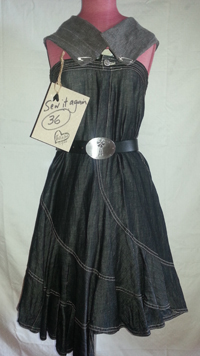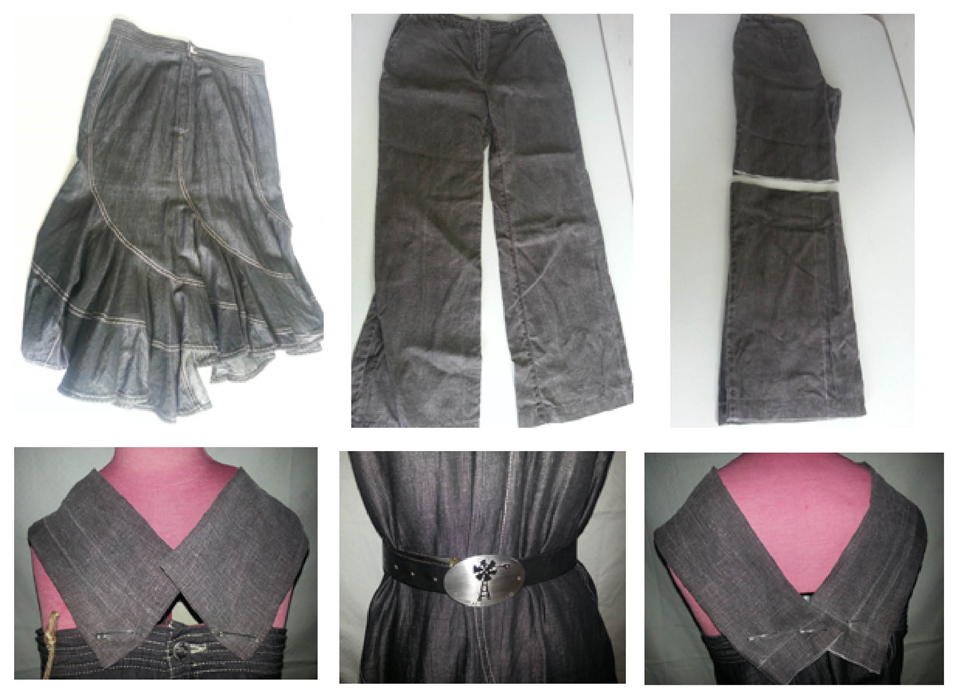 This op shop skirt oozed quality so I couldn’t bring myself to chop into it and instead added dress straps cut from the legs of a pair of trousers which I’ve attached using safety pins.
This op shop skirt oozed quality so I couldn’t bring myself to chop into it and instead added dress straps cut from the legs of a pair of trousers which I’ve attached using safety pins.
Closer inspection marks the skirt as a Cappopera design made in Italy from a beautiful linen-cotton blend fabric and splendidly stitched. The previous owner must have moved on from this life, this style or this size – but either way it became a natural resource worthy of upcycling.
Finding a plethora of such beautiful garments in op shops started me on this Sew it Again year of resewing existing garments as a demonstration of what we can all do if we rediscover a few simple home-sewing skills.
In her article Exploitation is still in vogue on ABC’s The Drum, eco-entrepreneur and activist Hannah Parris says Australians are enthusiastic garment consumers.
“During 2011, ABS reports we collectively imported over $5 billion worth of clothing and accessories, most of which is sourced cheaply from China or other low-wage Asian countries where many of the reported human rights and ecological abuses occur,” Parris wrote.
That $5 billion figure is astounding and when it becomes a repeat annual spend, no wonder op shops are groaning with past years’ reject stuff.
Cultivating some creative sewing skills, applying imagination and making time available for upcycling is one way of becoming a more sustainable and ethical dresser.
I refashioned this skirt into a dress, cinched at the waist by my favourite black belt with Rural Press Club belt-buckle – a souvenir of my time as president of Queensland’s leading agribusiness network. The straps are fabric cut from half a trouser leg, opened out and stitched as two strips. I could have sewn them in place but preferred to retain the integrity of the original garment, instead using safety pins as an feature in themselves and providing flexibility for future variations.

A cute concept to maintain the integrity of a classic garment and giving it an up-dated look. JoSe